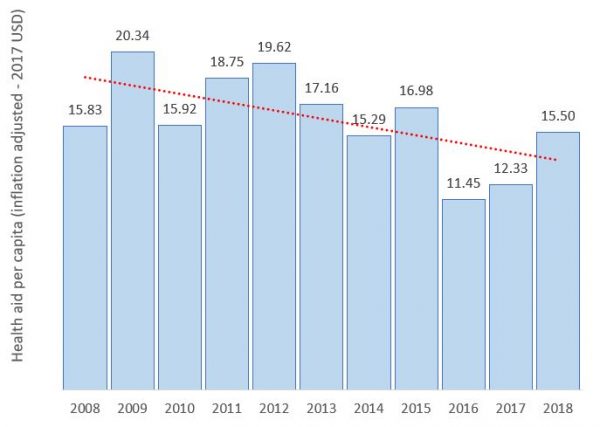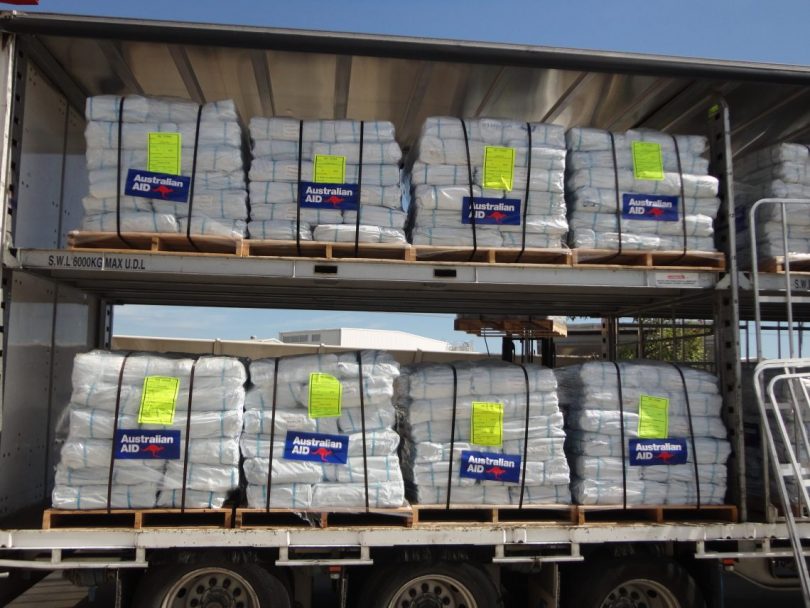How should Australia and New Zealand respond to the COVID-19 crisis in the Pacific? Aid isn’t the only way we can assist. In coming years, allowing more Pacific migration, for example, will speed economic recovery. But the Pacific is home to many of the world’s most aid-dependent countries. And Australia and New Zealand are the region’s two largest donors. In the Pacific, getting our aid response right matters.
It’s still too early to tell the exact form the crisis will take. With luck, the worst of the medical emergency will be dodged, in which case the problems will be economic. Without luck, there will be a medical emergency followed by a long economic struggle. Even without knowing exactly what is to come, key points can be made.
Don’t cut aid
The need for our aid is about to rise a lot. At home, fiscal pressure will also grow as Australia and New Zealand engage in deficit spending to keep our economies afloat. But rising debt doesn’t provide grounds for aid cuts. Australia and New Zealand have some of the wealthy world’s lowest levels of government debt. As I’ve shown before, when existing debt is taken into account, we’re two of the world’s least generous aid donors (New Zealand, to be fair, has become a little more generous since my analysis). More than most, we can afford to help.
Our aid budgets are also too small to have a material impact on our overall level of indebtedness. How small? The annual Australian aid budget is less than 2 per cent of the size of the stimulus package the federal government has promised. The annual New Zealand aid budget is about one twentieth the size of New Zealand’s stimulus spend. (Calculations here.) The debt the stimulus packages will bring will be too large to be addressed through aid cuts. Or, to put it another way, if we can afford to spend massively to save our economies, we can afford a fraction of this amount to help countries where need will be greater still.
Because we’re the region’s largest donors, avoiding aid cuts is particularly important to Pacific countries. But, right now, cuts elsewhere would be almost as bad. There will be problems throughout the developing world; we cannot turn away from the global response. We will win no friends if we abandon neighbours like Indonesia in this time of crisis either.
Health
If COVID-19 takes off in the Pacific, the immediate aid response will be medical. Even if the disease doesn’t spread in the region, we will still need to assist ailing governments. As Stephen Howes has emphasised, this should involve budget support. After that – in the medium term – donors need to think very carefully about the focus of their aid in the Pacific.
COVID-19 has highlighted the desperate state of health services in some Pacific countries. As Howes has shown, Australian aid spending on health has fallen since 2013. Health in the Pacific has become less of a priority for New Zealand. In 2008, health spending was 12 per cent of New Zealand’s sector-allocable aid spend in the region. By 2018, this had fallen to 6 per cent (data here). Other donors’ interest in health has also dwindled. All the while, the Pacific’s population has grown. This chart shows the consequence. When inflation is accounted for, health aid per capita to the Pacific from all official donors has trended down.
Health aid per capita to Pacific

Note: Trend line is an OLS line of best fit. Download source data, workings and notes here.
Falling aid for health didn’t cause the pandemic, but COVID-19 is an important reminder: the Pacific’s health needs are real. If we turn away from them, we turn away from an integral aspect of human well-being.
Let a good crisis go to waste
Contrary to conventional wisdom, donors have little ability to impose sweeping “neo-colonial” policy changes on aid recipients. Aid is too small to bring that power. The Pacific is somewhat different. Aid matters more to many countries. But even in the Pacific – as I learnt studying Solomon Islands politics – domestic political elites usually have more influence than donors do. Aid can bring change, but mostly around the margins. Donors’ powers are limited.
Limited, except during a crisis. When a country is in a credit-crunch, donors really do get to call the shots. Aid donors in the Pacific may soon find themselves able to impose big changes. They shouldn’t.
Let the crisis go to waste. Many of the issues in the region that have excited donors in the past, like property rights, are more complicated than is often appreciated. Even overstaffed bureaucracies, a real problem in normal times, become complicated in crises. The same salaries that cost the public purse, also keep extended families out of poverty. Similarly, an overvalued Kina in Papua New Guinea is terrible economic policy. But rapid devaluation now will send the price of rice and fuel skyrocketing. Not good in a crisis. Some change may be simply unavoidable. But that’s what donors should stick too: the unavoidable.
I think Australian and New Zealand aid program staff appreciate this. If that’s true, their role will be to educate other donors and at times their political masters.
Australian and New Zealand NGOs
My final recommendation stems from a topic I study: NGOs. Donations to development NGOs fall in hard times. We are in very hard times. In Australia and New Zealand, development NGOs will be struggling, yet they are important. Both in the Pacific and elsewhere, they do work the government and contractors cannot. Over the most recent 10 years with data, NGOs delivered over a quarter of the New Zealand and Australian governments’ humanitarian aid to the Pacific (data here). It appears NGOs may receive some help through general stimulus packages. Our aid programs also have a specific role to play: in both countries they run NGO funding schemes through which NGOs and the government agree to jointly fund work. As donations fall, the ability of NGOs’ to meet their agreed contributions will fall. Reflecting circumstances, our aid programs should let this occur without commensurate cuts in their own contributions, or punishing NGOs for not meeting obligations. As I’ve been drafting this post, the Australian and New Zealand aid programs have made excellent initial moves on this. Hopefully, assistance will continue. NGO donations may be down for a long time. Our NGOs have an important role to play. They need help to do this.
This isn’t an exhaustive list. But this is a start. But if we don’t get these basics right, we will fall short in our duty to help.
This post is part of the #COVID-19 and the Pacific series.



Hi Terence,
Enjoyed your informative article.
The elephant in the room with regards to aid flows (which are vital as ever) is geo-politics and the role of China. During the midst of the current COVID-19 crisis, China has come to Fiji’s aid providing support to its military with 47 vehicles and to the Ministry of Health with PPE and other equipment.
I note that Australia is providing $15 million as budgetary support to Fiji.
Thanks Vijay and great to hear from you.
I agree regarding geo-politics. It has been depressing to watch how, at a political level, China has influenced thinking about aid in Australia and — to a lesser extent — New Zealand.
How this will play out in the crisis, I don’t know.
In both countries, many aid workers in the government aid programmes aren’t obsessed with China. And right now politicians have no idea how to manage the aid response, which means aid workers may have a greater impact.
Maybe this will lead to less instinctive competition with China, and possibly even cooperation where appropriate.
That’s the positive take. I hope that’s what happens. I’m not sure I’ll be proven right though.
I hope all’s ok with you.
Terence
Great blog, Terence.
On the last point, would you recommend any other ways to assist NGOs, eg. increasing the tax deduction that individuals receive for donations?
Thanks Luke,
That’s a really interesting comment and question.
I’ve been thinking over potential counter-arguments this morning, but none are that persuasive.
I’m not sure it would be a certain winner, but I’d be in favour of giving it a try.
Thanks again.
Terence
This is an excellent analysis. It would be interesting to see the health budgeting issue explored more deeply. Would it be possible to track net health spending in the region (ie not only aid money)? I suspect that the trend line would be much the same and such would be an indictment of both donors and recipient governments. We may be in for a revival of some very familiar old discussions about the composition of aid portfolios and national budgets.
Hi James, thank you for your comment.
My sense is that you’re right and that in many countries domestic revenue to health has also fallen (or at least failed to keep up with need). It would be great to see some hard data on it though.
I agree that, once the crisis is over, whenever that will be, it would be excellent if it served as a catalyst for new discussions on just what aid’s focus should be.
Thanks again for your comment.
Terence